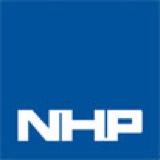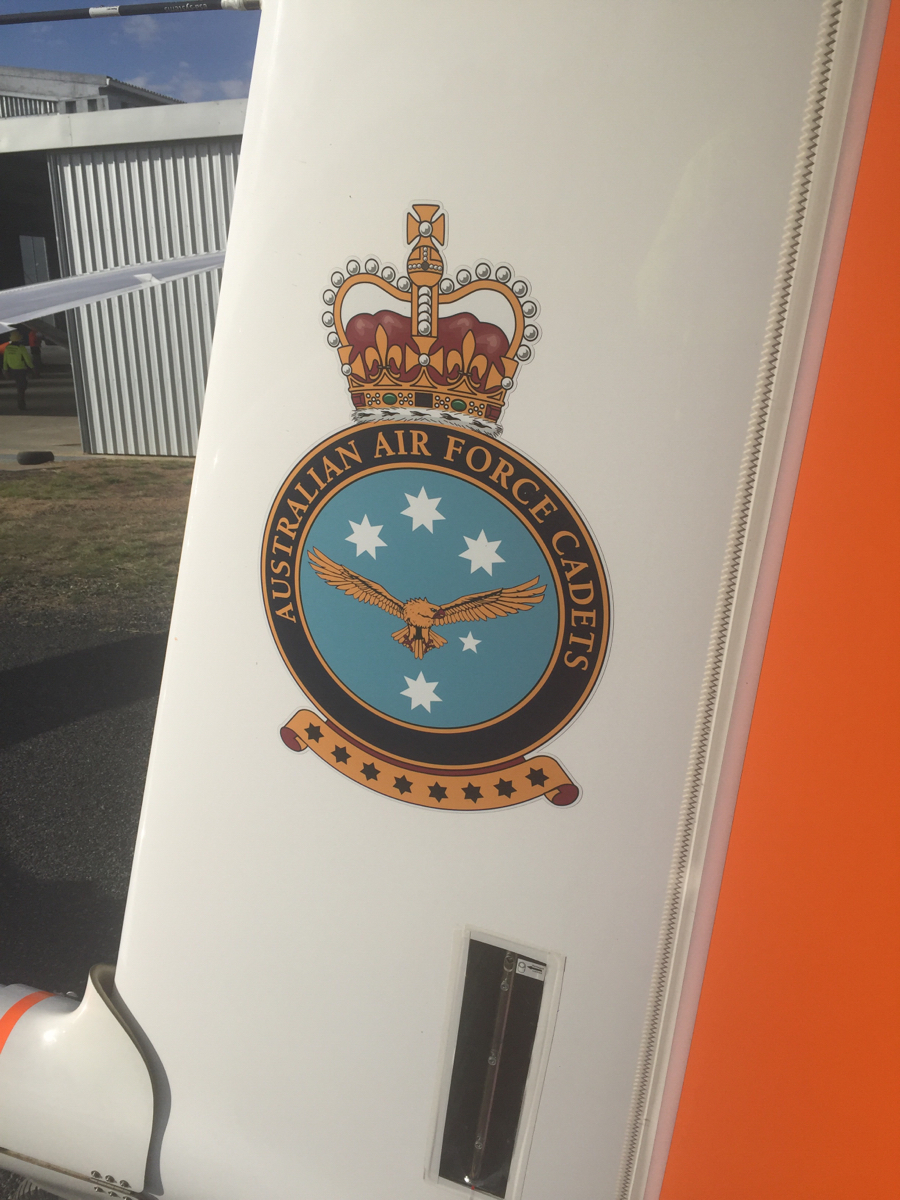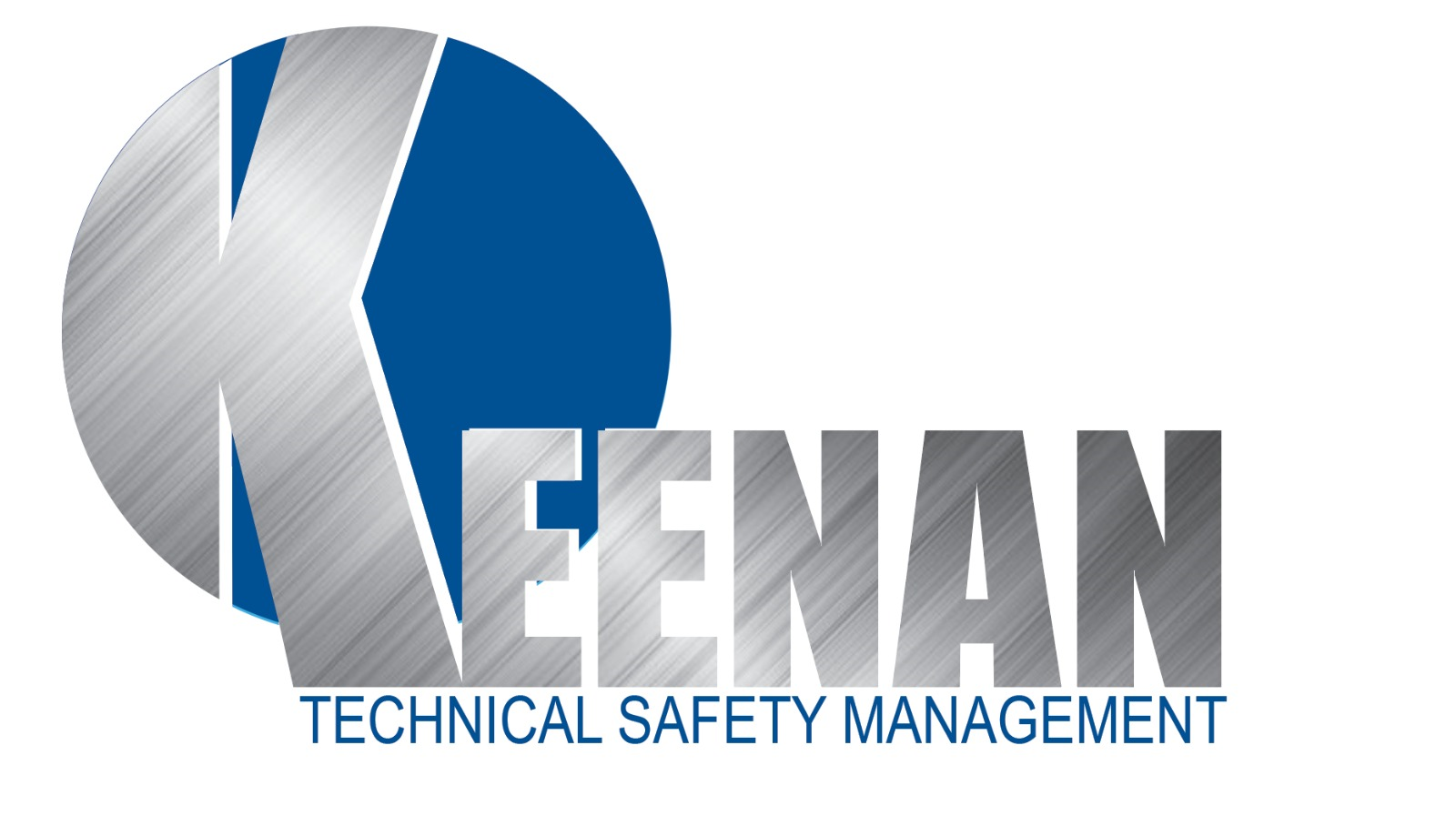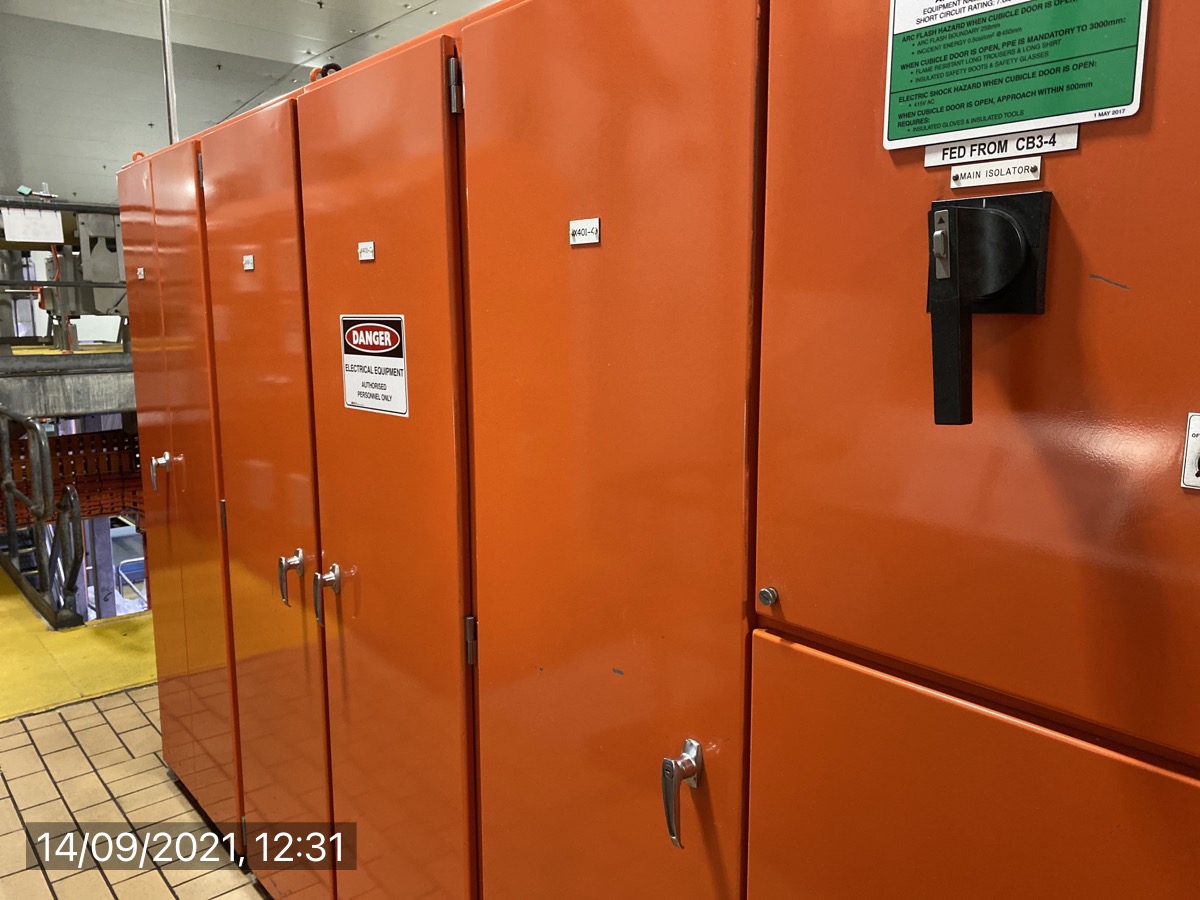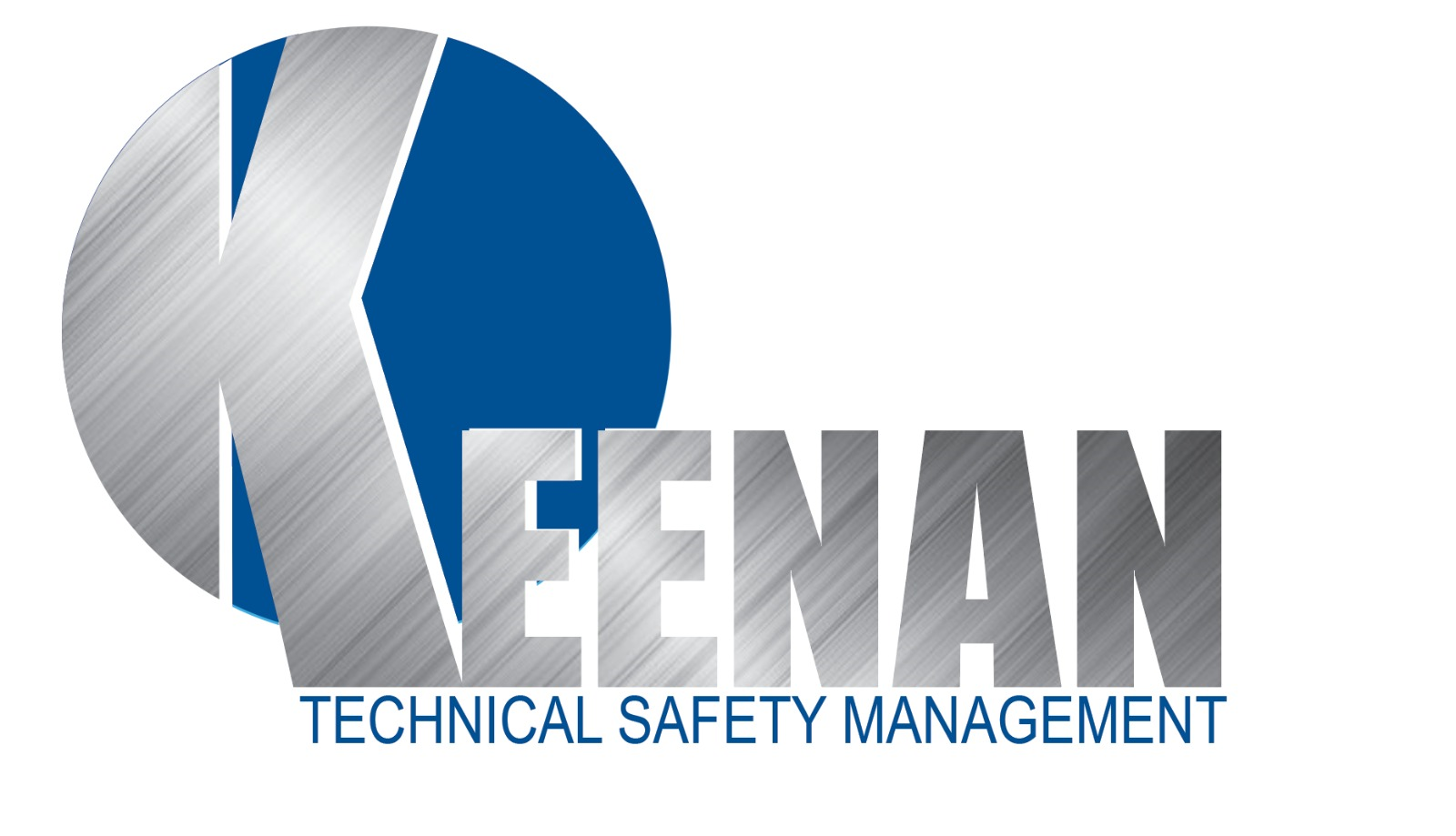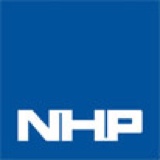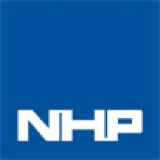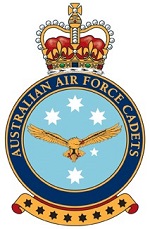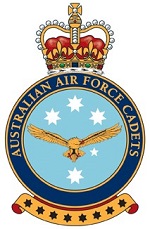Information
-
Document No.
-
Audit Title
-
Client / Site
-
Conducted on
-
Prepared by
-
Location
Assessment Details
Purpose of this Assessment
-
Purpose of this assessment is to provide the recipient company with advice and guidance relating to the safety of the plant, equipment or machinery being assessed. All relevant Australian, NZ and International standards applicable will be used to assess each machine, hazard, risk and processes.
Motivation of company requiring this assessment.
Service Provided
-
The risk assessment model being used is a widely acceptable form of examination for plant, equipment or machinery and work practices. The approach is a standardized set of approaches governing hazard identification, evaluating that risk posed to personnel. The assessment will give the reader an informed view on how likely a hazard would be to occur and what could be done to mitigate against the hazard occurring in the future.
In accordance with ISO 12100-1, the risk assessment is implemented in a series of logical steps to enable a systematic examination of the hazards associated with machinery. Risk assessment is followed, whenever necessary by risk reduction as described in clause 5 of ISO 12100-1: 2003. When this process is repeated it gives an iterative process for eliminating hazards as far as possible and for implementing safety measures.
The risk assessment methodology approach includes:
• Risk analysis
o Determination of limits
o Hazard identification
o Risk estimation
• Risk evaluation
The risk assessment provides the information required for the risk evaluation, which in turn allows judgements to be made on the safety of machinery.
This risk assessment report is based on information that was accumulated during the on-site risk assessment of the Machine Name in Customer Name on the Assessment Date.
The information was accumulated in the following fashion:
1. Interviewing machine operators
2. Interviewing maintenance personnel
3. Discussions with engineering personnel
4. Reviewing all available machine technical information
5. Conducting a physical examination of the machine
6. Conducting a design review of the machine
Design review of machine
In order to ensure the accuracy of the risk assessment for the machine, it is imperative that the information provided on the date of the risk assessment be correct and reliable. Pilz cannot take any responsibility for judgements made on inaccurate or lack of information.
NHP Contacts
-
NHP Personnel Conducting Assessment
NHP Personnel Involved
-
Name
-
Signature
Document Revisions
-
Document Revisons
Document Revision
-
Revised By?
-
Date of Revision
-
Signature of Document Editor
Site or Plant Contacts
-
Personnel Interviewed About Machinery
Site Contacts
-
Name
-
Position
-
Signature
Phases of machinery operation being assessed
-
Transport
-
Cleaning
-
Maintenance / Repair
-
De-commisioning
-
Operation
-
Disposal<br>
-
Installation
-
Assembly / Installation
Machine Information
Risk Estimation and Evaluation Methods
-
In order to identify, estimate and reduce the hazards present in the machine a Preliminary Hazard Analysis was performed using Hazard Rating Number (HRN) techniques.
A preliminary hazard analysis produces a line item tabular inventory of non-trivial system hazards, and an assessment of their remaining risk after countermeasures have been imposed. The Hazard Rating Number technique was used to analyse the risks associated with the machine. This technique offers an analytical approach to the Preliminary Hazard Analysis method.
The Evaluation methodology based on Pilz criteria and experience, an evaluation of the factors, Likelihood of Occurrence (LO), Frequency of Exposure (FE), Degree of Possible Harm (DPH) and Number of Persons at Risk (NP) has been performed on the risk related with each hazard. A Hazard Rating Number has then been calculated from the following formula:
HRN = LO x FE x DPH x NP
Where the above parameters can take the following values:
Likelihood of Occurrence (LO)
0.033 Almost impossible Possible only under extreme circumstances
1 Highly Unlikely But could occur
1.5 Unlikely Though conceivable
2 Possible But Unusual
5 Even Chance Could happen
8 Probable Not surprised
10 Likely Only to be expected
15 Certain No doubt
Frequency of Exposure (FE)
0.5 Annually
1 Monthly
1.5 Weekly
2.5 Daily
4 Hourly
5 Constantly
Degree of Possible Harm (DPH)
0.1 Scratch / Bruise
0.5 Laceration / cut / mild ill health effect
1 Fracture: minor bone – fingers/ toes
2 Fracture- major bone – hand/ arm/ leg
4 Loss of 1 or 2 fingers/ toes
8 Leg / hand amputation, partial loss of hearing or eye
10 Amputation of 2 legs/hands, total loss of hearing/sight in both ears/eyes
12 Critical or permanent illness
15 Fatality
Number of Persons at Risk (NP)
1 1- 2 persons
2 3-7 persons
4 8-15 persons
8 16-50 persons
12 More than 50 persons
The maximum and minimum numerical values that could be assigned to each factor for every hazard are shown in the following table.
HRN Risk Comment
0-1 Negligible Risk Presents no risk to health and safety, no control measures required
2-5 Very Low Risk Presents very little risk to health and safety, no significant control measures required, may necessitate the use of personal protective equipment and/or training
6-15 Low Risk Risk to health and safety is present, but low. Control measures must be considered.
16-50 Significant Risk The risk associated with the hazard is sufficient to require control measures. These measures should be implemented at the next suitable opportunity.
51-100 High Risk Potentially dangerous hazards, which require control measures to be implemented urgently.
101-500 Very High Risk Control measures should be implemented immediately, corporate management should be notified.
501- Extreme Risk Control measures should be implemented immediately, equipment should not be operational or the specific hazardous task should not be perform until control measures are in place. Corporate management should be notified.
After a complete examination of the machine based on applicable standards, a numerical value was determined for each factor while conducting the Risk Assessment and the Hazard Rating Number was calculated. The calculated number was then used to evaluate the risk associated with the hazard by comparison with predetermined acceptable levels.
The calculated Hazard Rating Number ranges from 0 to 13500 where 0 is the lowest showing no risk and 13500 is the highest risk.
Machines that are subject to assessment
-
Machinery being assessed
Machine
Basic Machine Limits
-
Machine
-
Machine Name
-
Manufacturer / OEM
-
Machine Importer or supplier
-
Machine Serial Number
-
Are operators trained to use equipment?
-
Who is responsible for maintenance on this machine?
- Maintenance Mechanical
- Maintenance Electrical
- Maintenance Dept.
- Operator
- Machine Setter
- Cleaner
-
Who is responsible for cleaning & clearing of jams on this machine?
- Maintenance Mechanical
- Maintenance Electrical
- Maintenance Dept.
- Operator
- Machine Setter
- Cleaner
-
Are maintenance staff trained on equipment?
-
What is the normal maintenance interval?
- Daily
- Weekly
- Monthly
- Bi-Monthly
- 6 Monthly
- Yearly
-
Is machine being used in it's intended environment?
-
Basic Description of Control System
-
What is the control voltage?
-
What is the main power supply voltage?
-
Does the machine have Steam under pressure?
-
Does the machine have Hydraulic Controls
-
Does the machine have Pneumatics controls?
Machine Documentation viewed
-
Electrical Drawings
-
Hydraulic Circuits
-
Pneumatic Circuits
-
Mechanical Layouts
-
Operating manuals
-
Maintenance Manuals
-
Safety Instructions
-
Material Safety Data Sheets
Details relating to hazard and tasks
-
Description of all Hazards
Hazard
-
Photograph of Hazard
-
Area of Machine associated with hazard?
- In-Feed
- Out-Feed
- Operator Control / Machine Side
- Maintenance / Setup
- Machine Rear
- Hydraulic System
- Pneumatic System
-
Task or operation?
- Construction
- Transportation
- Assembly & Installation
- Commissioning
- Setting/ Programming/ Changeover
- Operation
- Cleaning / Maintenance
- Fault Finding / Trouble shooting
- Decommissioning and dismantling
-
Types of Hazards associated with the task?
- Mechanical
- Electrical
- Thermal
- Noise
- Vibration
- Radiation
- Materials or Substances
- Ergonomic / RSI
- Combination of Hazards
- Unexpected Start-up, Unexpected Overspeed or overrun
- Unable to stop machine in best conditionVariations on the rotational speed of the tools
- Human Error / Human Behaviour
- Fire and Explosion
- Emmision of Gas and/or Dust etc.
- Third Person involvement
- Inadequate training or SOP's
- Due to power source or transmission of power
- Due to control system
- Failure of power supply
- Failure of controls system
- loss of stability
- Slip, trips or Falls
- Variable Speed of rotation or tools or hazards
- Linked to work position
- Errors of fitting, loading
- Break up during operation
-
Hazard Description
Hazard Rating Number - multiply DPH x FE x LO x NP to get HRN - the number determines the Risk Level.
-
DPH - Degree of Possible Harm
- 0.1- Scratch / Bruise
- 0.5 - Laceration / cut / Mild ill health
- 1 - Fracture Minor Bone - fingers / toes
- 2 - Fracture Major Bone - Hand / Arm / Leg
- 4 - Loss of some fingers or toes
- 8 - Loss of Leg / Arm or hand, partial loss of hearing or sight
- 10 - Amputation of both Arms or Both Legs, total loss of sight or hearing
- 12 - Critical Permanent IIIllness
- 15 - Fatality
-
FE - Frequency of Exposure
- 0.5 - Annually
- 1 - Monthly
- 1.5 - Weekly
- 2.5 - Daily
- 4 - Hourly
- 5 - Constantly
-
LO - Likelihood of Occurance
- 0.033 - Almost Impossible
- 1 - Highly Unlikely
- 1.5 - Unlikely
- 2 - Possible
- 5 - Even Chance
- 8 - Probable
- 10 - Likely
- 15 - Certain
-
NP - Number of Persons affected / in hazardous area
-
HRN - Hazard Rating Number ( LO x FE x DPH x NP = HRN)
- 0-1 Negligible Risk
- 2-5 Very Low Risk
- 6-15 Low Risk
- 16-50 Significant Risk
- 51-100 High Risk
- 101-500 Very High Risk
- 501 > Extreme Risk
Residual Risk Reduction
-
Residual Risk Reduction Measures
-
DPH - Degree of Possible Harm after Risk Reduction
- 0.1- Scratch / Bruise
- 0.5 - Laceration / cut / Mild ill health
- 1 - Fracture Minor Bone - fingers / toes
- 2 - Fracture Major Bone - Hand / Arm / Leg
- 4 - Loss of some fingers or toes
- 8 - Loss of Leg / Arm or hand, partial loss of hearing or sight
- 10 - Amputation of both Arms or Both Legs, total loss of sight or hearing
- 12 - Critical Permanent IIIllness
- 15 - Fatality
-
FE - Frequency of Exposure after Risk Reduction
- 0.5 - Annually
- 1 - Monthly
- 1.5 - Weekly
- 2.5 - Daily
- 4 - Hourly
- 5 - Constantly
-
LO - Likelihood of Occurrence after Risk Reduction
- 0.033 - Almost Impossible
- 1 - Highly Unlikely
- 1.5 - Unlikely
- 2 - Possible
- 5 - Even Chance
- 8 - Probable
- 10 - Likely
- 15 - Certain
-
NP - Number of Persons affected / in hazardous area
-
HRN - Hazard Rating Number ( LO x FE x DPH = HRN) after Risk Reduction
- 0-1 Negligible Risk
- 2-5 Very Low Risk
- 6-15 Low Risk
- 16-50 Significant Risk
- 51-100 High Risk
- 101-500 Very High Risk
- 501 > Extreme Risk
-
Does the Risk reduction measures require a safety control system (SRPCS)?
Category of Control required (AS4024.1501:2014) if Guarding solution requires SRP/CS and not just a mechanical guarding.
-
Severity of Hazard
-
AS4024.1-2014 Category B+1
Category B - Well Tried Principles - components - designed and constructed to withstand expected influences. Be correctly protected and dimensioned.
Category 1 - Well Tried Safety Components and principles - widely used with successful components, made and verified for use in safety circuits. -
Frequency of Hazardous Event
-
Possibility of Avoiding the Hazard(s)
-
AS4024.1-2014 Category 1 (with over-dimensioning and Fault exclusion) or Category 2
Category B - Well Tried Principles - components - designed and constructed to withstand expected influences. Be correctly protected and dimensioned.
Category 1 - Well Tried Safety Components and principles - widely used with successful components, made and verified for use in safety circuits.
OR
Category 2 - Category B shall apply + safety functions shall be checked by the machine control system at suitable intervals. If manual checks are performed then this should be documented. Check shall generate a fault indication if a fault is detected -
AS4024.1-2014 Category 2 (with over-dimensioning and Fault exclusion) or Category 3
Category B - Well Tried Principles - components - designed and constructed to withstand expected influences. Be correctly protected and dimensioned.
Category 2 - Category B shall apply + safety functions shall be checked by the machine control system at suitable intervals. If manual checks are performed then this should be documented. Check shall generate a fault indication if a fault is detected
OR
Category 3 - Category B shall apply + shall be designed so that a single fault in any part of the SRP/CS does not lead to a loss of safety function. Wherever reasonably practicable, the single fault shall be detected at or before the next demand upon the safety function. -
Possibility of Avoiding the Hazard(s)
-
AS4024.1-2014 Category 3
Category B - Well Tried Principles - components - designed and constructed to withstand expected influences. Be correctly protected and dimensioned.
Category 3 - Category B shall apply + shall be designed so that a single fault in any part of the SRP/CS does not lead to a loss of safety function. Wherever reasonably practicable, the single fault shall be detected at or before the next demand upon the safety function. -
AS4024.1-2014 Category 4
Category B - Well Tried Principles - components - designed and constructed to withstand expected influences. Be correctly protected and dimensioned.
Category 4 - Category B shall apply + a single fault in SRP/CS does not lead to loss of safety function and the single fault is detected at or before the next demand of the safety functions i.e. immediately or at the end of the machine operating cycle. If detection is not possible then an accumulation of faults shall not lead to a loss of safety function.
Performance Level
Performance Level of SRPCS required (AS4024.1503:2014) if Guarding solution requires SRP/CS and not just a mechanical guarding solution.
-
Severity of Hazard
-
Frequency of Hazardous Event
-
Possibility of Avoiding the Hazard(s)
-
PL a AS4024.1503:2014
Category B - Well Tried Principles - components - designed and constructed to withstand expected influences. Be correctly protected and dimensioned.
Category 1 - Well Tried Safety Components and principles - widely used with successful components, made and verified for use in safety circuits.
OR
Category 2 - Category B shall apply + safety functions shall be checked by the machine control system at suitable intervals. If manual checks are performed then this should be documented. Check shall generate a fault indication if a fault is detected -
PL b AS4024.1503-2014
Category B - Well Tried Principles - components - designed and constructed to withstand expected influences. Be correctly protected and dimensioned.
Category 2 - Category B shall apply + safety functions shall be checked by the machine control system at suitable intervals. If manual checks are performed then this should be documented. Check shall generate a fault indication if a fault is detected
OR
Category 3 - Category B shall apply + shall be designed so that a single fault in any part of the SRP/CS does not lead to a loss of safety function. Wherever reasonably practicable, the single fault shall be detected at or before the next demand upon the safety function. -
Possibility of Avoiding the Hazard(s)
-
PL b AS4024.1503:2014
Category B - Well Tried Principles - components - designed and constructed to withstand expected influences. Be correctly protected and dimensioned.
Category 3 - Category B shall apply + shall be designed so that a single fault in any part of the SRP/CS does not lead to a loss of safety function. Wherever reasonably practicable, the single fault shall be detected at or before the next demand upon the safety function. -
PL c AS4024.1503-2014
Category B - Well Tried Principles - components - designed and constructed to withstand expected influences. Be correctly protected and dimensioned.
Category 4 - Category B shall apply + a single fault in SRP/CS does not lead to loss of safety function and the single fault is detected at or before the next demand of the safety functions i.e. immediately or at the end of the machine operating cycle. If detection is not possible then an accumulation of faults shall not lead to a loss of safety function. -
Frequency of Hazardous Event
-
Possibility of Avoiding the Hazard(s)
-
PL c AS4024.1503 -2014
Category B - Well Tried Principles - components - designed and constructed to withstand expected influences. Be correctly protected and dimensioned.
Category 1 - Well Tried Safety Components and principles - widely used with successful components, made and verified for use in safety circuits.
OR
Category 2 - Category B shall apply + safety functions shall be checked by the machine control system at suitable intervals. If manual checks are performed then this should be documented. Check shall generate a fault indication if a fault is detected -
PL d AS4024.1503:2014
Category B - Well Tried Principles - components - designed and constructed to withstand expected influences. Be correctly protected and dimensioned.
Category 2 - Category B shall apply + safety functions shall be checked by the machine control system at suitable intervals. If manual checks are performed then this should be documented. Check shall generate a fault indication if a fault is detected
OR
Category 3 - Category B shall apply + shall be designed so that a single fault in any part of the SRP/CS does not lead to a loss of safety function. Wherever reasonably practicable, the single fault shall be detected at or before the next demand upon the safety function. -
Possibility of Avoiding the Hazard(s)
-
PL d AS4024.1503:2014
Category B - Well Tried Principles - components - designed and constructed to withstand expected influences. Be correctly protected and dimensioned.
Category 3 - Category B shall apply + shall be designed so that a single fault in any part of the SRP/CS does not lead to a loss of safety function. Wherever reasonably practicable, the single fault shall be detected at or before the next demand upon the safety function. -
PL e AS4024.1503:2014
Category B - Well Tried Principles - components - designed and constructed to withstand expected influences. Be correctly protected and dimensioned.
Category 4 - Category B shall apply + a single fault in SRP/CS does not lead to loss of safety function and the single fault is detected at or before the next demand of the safety functions i.e. immediately or at the end of the machine operating cycle. If detection is not possible then an accumulation of faults shall not lead to a loss of safety function.
Sketches or Drawings
- Drawings
-
Add media
-
Add drawing
Photo Annex
- Photograph
-
Add media
